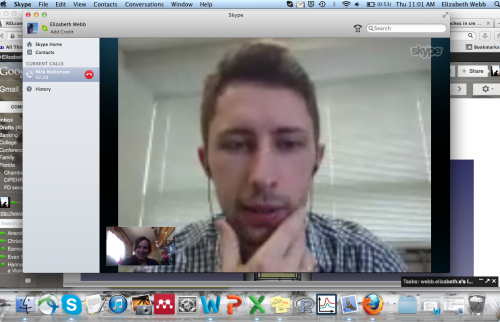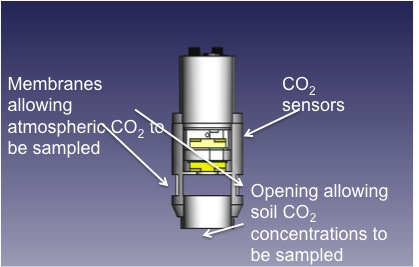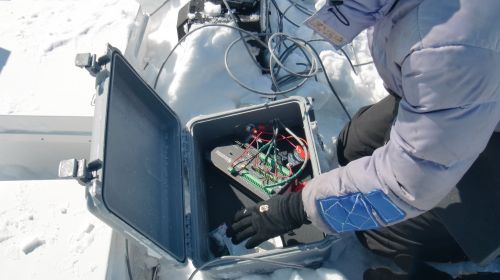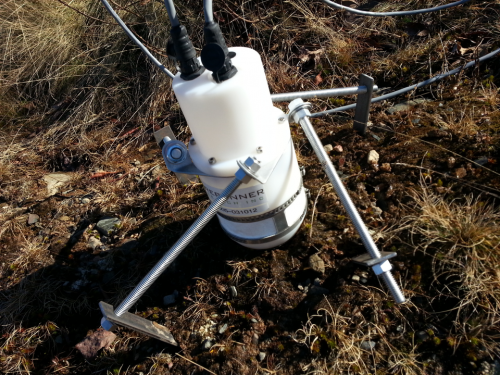I am using five different methods to measure winter respiration. This is because we don’t know which method is giving us the most accurate reading of carbon loss over the winter. All methods have pros and cons (more on that later), but the more methods we have to measure winter respiration, the better idea we can get about the magnitude of winter respiration. Earlier Mr. Lane posted journal entry's on Smiley or the “Snow-pit” Method and the On-plot (fences) Method. This journal entry is on another method: The Forced Diffusion (FD) Sensors.
FD sensors are a relatively new product and we are one of the first groups to try them out. This is cool because we have the opportunity to try new equipment that may change the way scientists measure soil respiration. It does have downsides, however, because all the quirks are not worked out yet. But that’s all part of the scientific process: coming up with an idea, testing it, and then refining and refining the method until it works the way you want it to. The scientific community is still improving methods that were developed decades ago; this is an ongoing process in just about every field of science.
Here I am skyping with Nick Nickerson, the Chief Scientist at Forerunner Research. We are talking about how to improve the FD sensors we have installed at CiPEHR right now.

The FD sensors were developed by Dr. Hugo Beltrami, Dr. Dave Risk, and Dave’s students; Gordon McArthur and Nick Nickerson at St.Francis Xavier University in Antigonish, Nova Scotia, Canada. After testing the FD sensors and publishing a paper introducing them to the scientific community, Gordon, Nick, and Dave started a company called Forerunner Research to refine and commercialize the FD sensors beyond the research stage.
Inside the FD sensors are two CO2 sensors, one that measures the CO2 concentration of the soil and another that measures the CO2 concentration of the air right above the soil. The CO2 flux (amount of CO2 coming out of the soil) is then determined by a known diffusion constant (measured in the lab with each individual sensor) and the soil and air CO2 concentrations.

There are lots of reasons to like the FD sensors. First, they measure winter respiration every three hours, even when we are not at the field site! This is great because they can measure the CO2 flux when it is too cold to go out or when I am in Florida looking at data. All we have to do is collect the data from the data-logger:

The FD sensors also don’t require a lot of power, so they can run the whole winter by themselves. That’s provided nothing breaks, but of course in the field something always throws a wrench into your plans. The last reason to really like the FD sensors is that we can place them directly on the plots so we can see if the warming plots release a different amount of CO2 than the control plots. Here’s what they look like in the field:



Comments